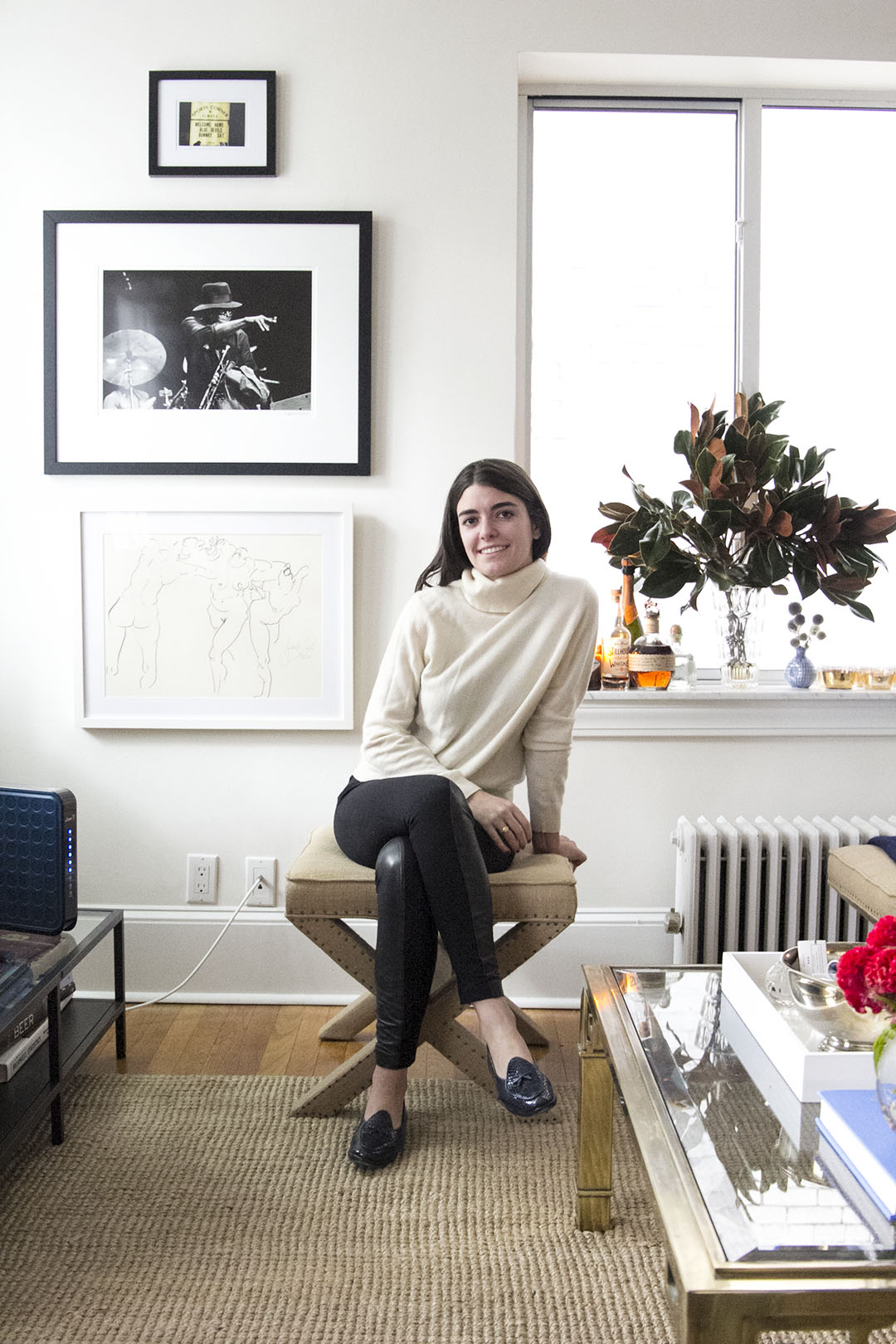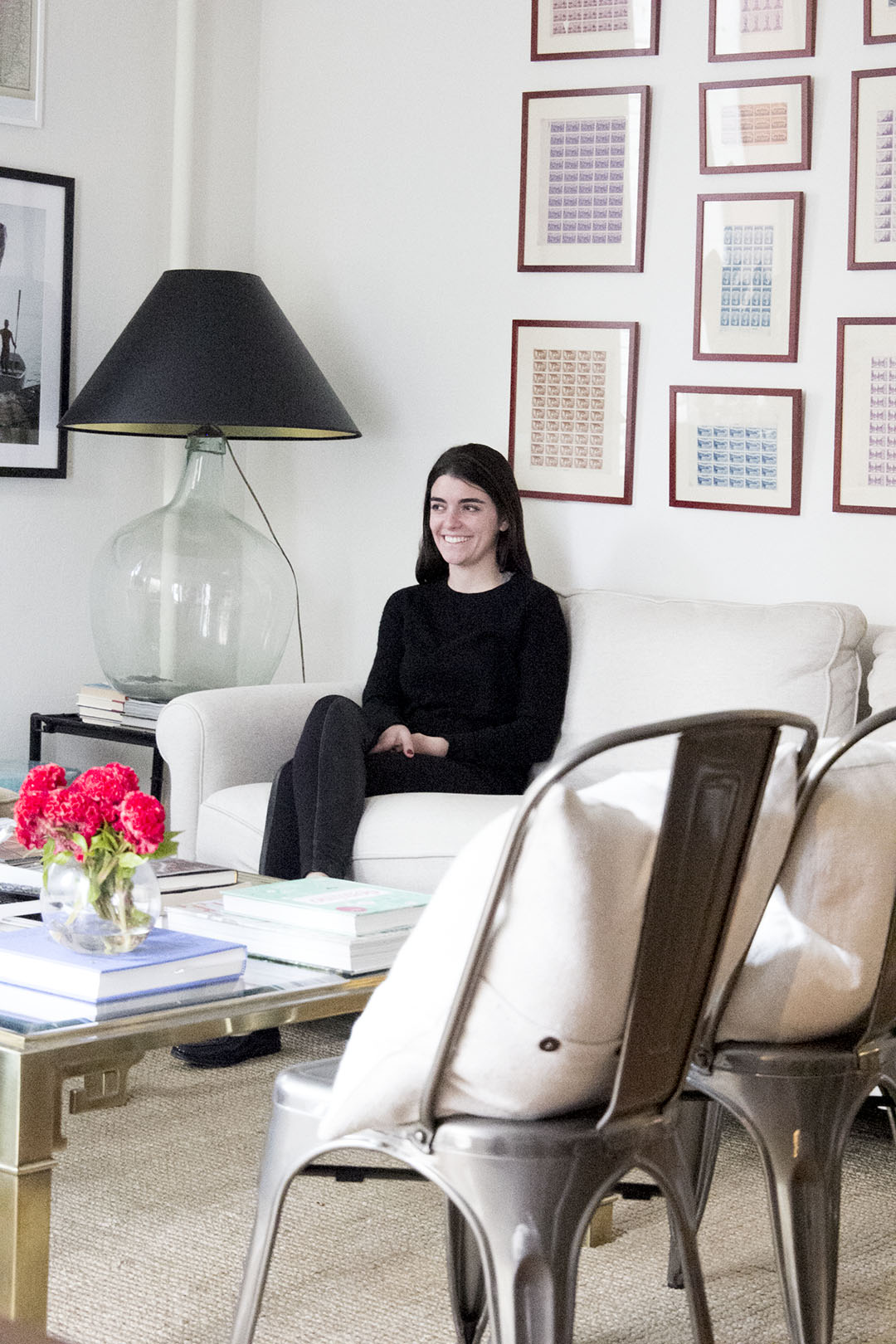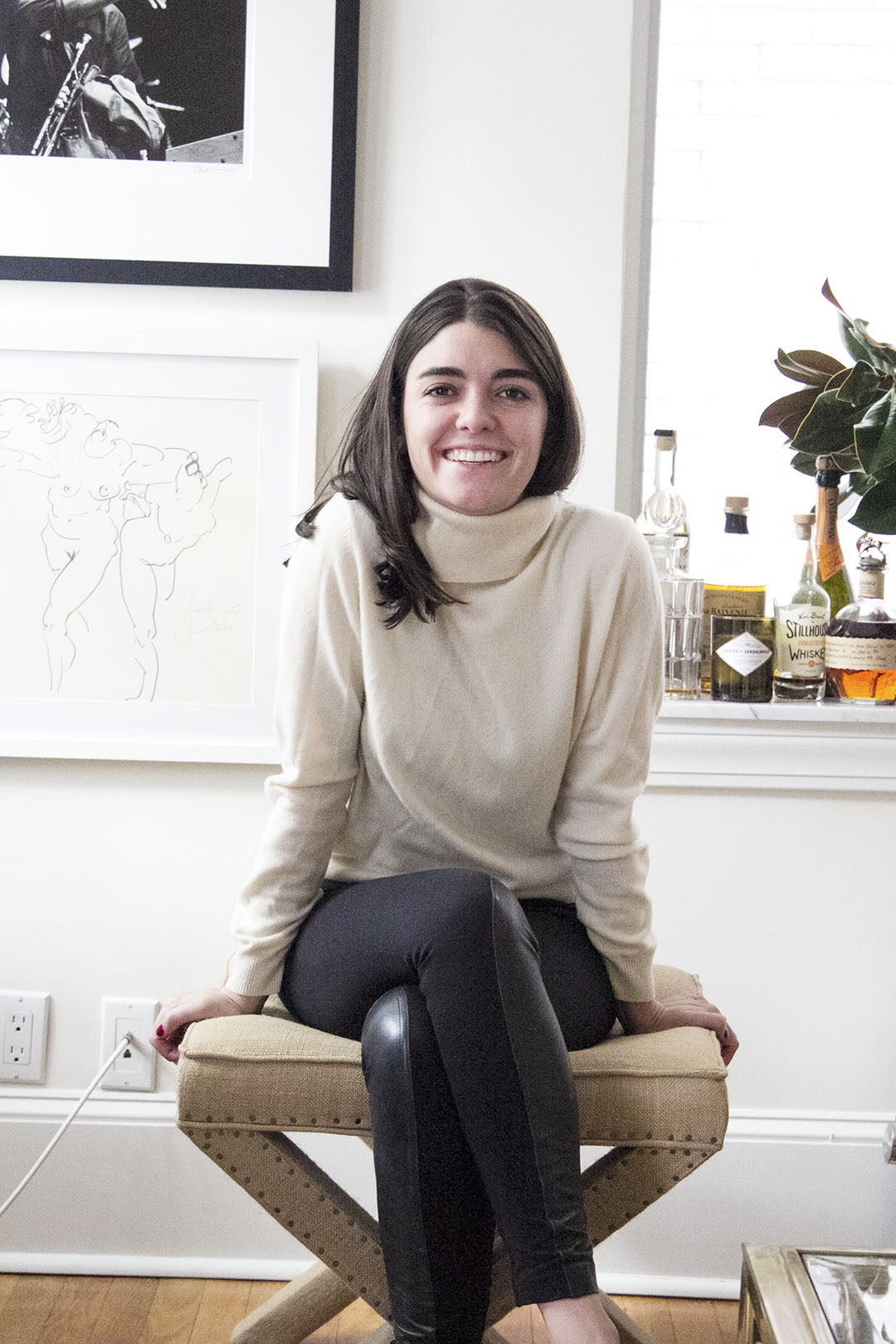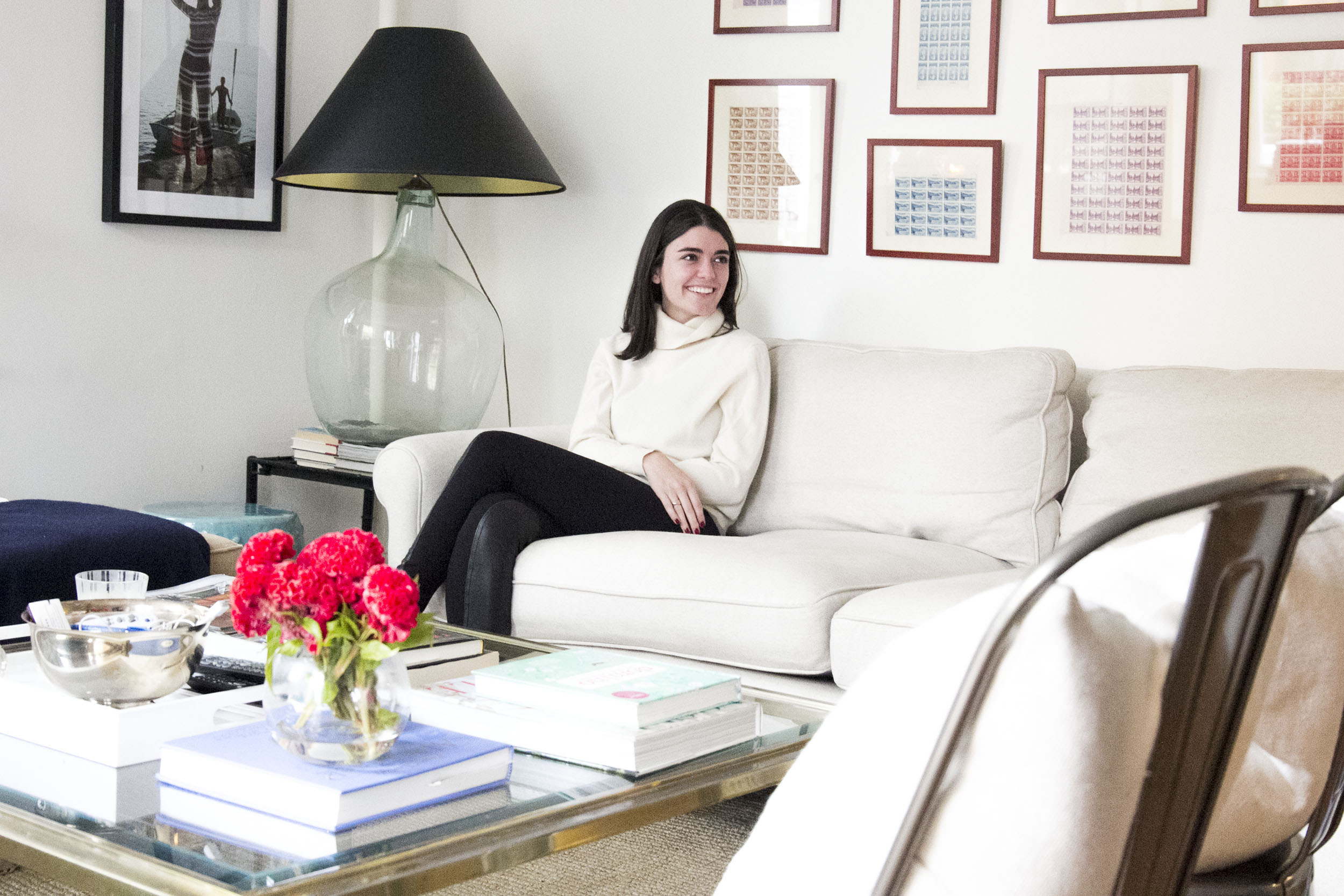We all have different friends that we turn to for recommendations. You know, the ones that seem to know the new restaurant about to blow up or have their finger on the pulse of the new designer to watch. When it comes to interior decorating, Britt Caputo is your woman. If there’s anyone that claim to be a pro in the décor world, it’s her. And for good reason too.
One King’s Lane is pretty much the holy grail in décor circles and that’s exactly the place she cut her teeth, starting off in buying before manning all things data and analytics. Naturally, friends would flock to her with questions from where to buy that Pinterest-worth coffee table to where to start when dealing with the mammoth task of decorating a new pad from scratch. That’s where the eureka moment hit. She quit her job at One King’s Lane and enrolled at Stanford Business School before getting to work on Hamlet, her business, which will pretty much change the way you decorate your home.
The new service allows you to get advice from her team of interiors junkies from the comfort of your home. Simply send a picture of description of what you’re after by text, and they’ll do all the hard work for you. Found a mirror on Pinterest that you love but can’t find? The team will scour the market to find one within your price range, style and text you photos of options and arrange the shipping straight to your door.
Essentially, Britt wants to change the way we approach the decorating process and start talking about design the way we talk about fashion. Nobody wakes up one day and says, ‘OK, I’m going to start building my whole wardrobe this month, and by next month I’ll be done.’ The clothes we wear constantly reflects where we are in life, how much we earn and where our style is right now and that’s exactly how our homes should be. It’s a constant evolution.
We got comfy in her home to talk about generation #interiorsporn, why Hamlet is different to Homepolish and why it sometimes pays to work at a company in a field you want to work in before launching a business of your own.
 ON HER EDUCATIONAL BACKGROUND: I had a very liberal arts college experience at Harvard, where I studied English and wrote a thesis about Victorian poetry. It was so indulgent. I loved every minute. At the time, I thought my first few jobs after college were a second education in unlearning the qualitative, non-linear way I had been taught to process information. But now I have a new appreciation for those early lessons in narrative. Business – I’m finding – is so much more about storytelling and imagination than I thought. After five years, I went to Stanford for business school, which is at least ostensibly a lot more related to what I do now. There is such a powerful, cool feeling at Stanford that anything is possible. If you can imagine it, you can create it. I thought it would be thrilling to live in the middle of Silicon Valley and learn from the people who made it famous. It really was. There are so many ideas floating around – both established and totally unrealized – that it’s a total mental Disneyland. When I first visited Stanford, I felt a bit out of place as a non-tech East Coast person wearing leather pants in 70-degree weather. It was the kind of discomfort that poses a challenge: you should explore this.
ON HER EDUCATIONAL BACKGROUND: I had a very liberal arts college experience at Harvard, where I studied English and wrote a thesis about Victorian poetry. It was so indulgent. I loved every minute. At the time, I thought my first few jobs after college were a second education in unlearning the qualitative, non-linear way I had been taught to process information. But now I have a new appreciation for those early lessons in narrative. Business – I’m finding – is so much more about storytelling and imagination than I thought. After five years, I went to Stanford for business school, which is at least ostensibly a lot more related to what I do now. There is such a powerful, cool feeling at Stanford that anything is possible. If you can imagine it, you can create it. I thought it would be thrilling to live in the middle of Silicon Valley and learn from the people who made it famous. It really was. There are so many ideas floating around – both established and totally unrealized – that it’s a total mental Disneyland. When I first visited Stanford, I felt a bit out of place as a non-tech East Coast person wearing leather pants in 70-degree weather. It was the kind of discomfort that poses a challenge: you should explore this.
THE PROS AND CONS OF BUSINESS SCHOOL: It’s a luxury – it’s definitely not a necessary step in starting your own business. In fact, there are meaningful drawbacks for an entrepreneur who is eager to get started: it can set you back two years and a lot of personal debt. That said, for me it was super helpful. I’ve encountered so many questions I don’t immediately know how to answer or even articulate. At business school, I met so many people who have helped answer that question, including people who have started something before or are doing it now. I had the luxury of learning from example, by reading hundreds of cases, listening to business leaders and first-time entrepreneurs speak, and so on. Ultimately, I think the “right” time to start something is when you have the confidence to do it and the impulse that you couldn’t imagine doing anything else. Often, business school puts you in that place – but you don’t need business school to get there.
ON WORKING AT ONE KING’S LANE: I am so lucky I got to work there. From the beginning, I was in awe of how beautiful it is. It’s so clear that the people who built it are passionate about home, about brand, and about every corner of that website. I think at first I was stunned and excited to learn that an entire company full of people was interested in home décor, and that it could be a job. I had no idea how much I would learn from the team there and am so grateful I got be a small part of it. I showed up with a list of ideas I could work on, not knowing what role was available (if a role was available) or –when I learned they were looking for “assistant buyers” – what an assistant buyer does. I was so excited to be a part of it that I googled a bunch of merchandising terms to learn about “buying” and took the only job they offered me. At first I was on the merchandising team. That role was like drinking from a retail fire hose: go to tradeshows, negotiate with vendors who haven’t heard of the Internet, manually re-arrange product so it appears in a compelling way online. I worked on table top (and have a lot of tableware at home to show for it). After a year I moved into analytics, which, for us, meant trying to surface helpful insights from data. The questions I thought about everyday shifted from “is this a good flatware vendor” to “is this margin sustainable.” I loved it.
DECIDING TO LEAVE THE SECURITY OF HER 9-TO-5: I decided to go to business school to broaden my perspective. In retail, I had only worked in home and in e-commerce. Progressively during my time at One Kings Lane I focused more and more on data. I was knee deep in SQL queries, metrics dashboards, and performance presentations. I really liked those things, but it started to get a little niche. I hoped that if I went to business school I could get more exposure to other categories, other perspectives, other skill sets (or at least learn enough to convince someone I could take on other responsibilities). At business school, I learned a ton about other industries and roles. I interned at a venture capital firm, where I got a taste of how investors view businesses rather than operators. I decided to start my own business because I was – and am – so energized by the prospect of creating a home décor experience people love. It wasn’t a rational decision; it was an impulsive stubborn preference.
HER REGRET FRAMEWORK: I ask myself, in 10 years (or 50), what do you think you might regret? Business school is by no means a risk – in some ways it is the opposite – but this framework was helpful in deciding to make that investment. In deciding to pursue my own business, it also came in handy. It forced me a bit to gather and assess all the information I had available – what salary would I be foregoing at the other jobs that were available, how many years could I realistically commit, what would it look like to fail, and so on. Ultimately you’re making decisions with imperfect (or very little) information, so that’s where thinking as objectively as possible about what your future self would recommend based on regret is a helpful way to try gaining perspective.
 THE EUREKA MOMENT FOR HAMLET: If you called a customer service agent 15 years ago about a catalog piece, she could probably tell you: yes, it is 15” long and a bit more grey than in the photo. If you called today, she probably has never seen the product. There is an enormous amount of product available online (and offline) but there isn’t really any service. Is there a way to cut through the noise – to figure out what is the best bedding for your buck? Is there a way to understand how to use some of these products – to figure out what could fill that corner, or how to populate the wall above your sofa? Is there a way to take an inspiration photo you diligently surfaced from Instagram – and source the products within it? There should be. When I graduated from business school, a flood of friends texted or emailed me asking where to buy certain pieces. In a sea of options, we want a little guidance: reviews, photos, intelligence, service. That’s where the idea came from. That there is a level of service and trust missing in between the decorator model and the self-serve approach. Ultimately I believe that everyone has a sense of their style – even if they can’t articulate it, or don’t care to, they know if they love a room the moment they walk into it. I love the idea of an approachable service that partners with someone to help them implement their style along the way.
THE EUREKA MOMENT FOR HAMLET: If you called a customer service agent 15 years ago about a catalog piece, she could probably tell you: yes, it is 15” long and a bit more grey than in the photo. If you called today, she probably has never seen the product. There is an enormous amount of product available online (and offline) but there isn’t really any service. Is there a way to cut through the noise – to figure out what is the best bedding for your buck? Is there a way to understand how to use some of these products – to figure out what could fill that corner, or how to populate the wall above your sofa? Is there a way to take an inspiration photo you diligently surfaced from Instagram – and source the products within it? There should be. When I graduated from business school, a flood of friends texted or emailed me asking where to buy certain pieces. In a sea of options, we want a little guidance: reviews, photos, intelligence, service. That’s where the idea came from. That there is a level of service and trust missing in between the decorator model and the self-serve approach. Ultimately I believe that everyone has a sense of their style – even if they can’t articulate it, or don’t care to, they know if they love a room the moment they walk into it. I love the idea of an approachable service that partners with someone to help them implement their style along the way.
THE TESTING STAGE: We needed a quick, easy way to test out a few basic questions: do people want advice – would they text us for ideas? And if we were able to offer good recommendations – would they buy them? Over text message? So, we registered for a free Google Voice number and put up a few posts on Craigslist advertising the service. We also told a few friends we knew were moving or in the market for home goods. Within a few hours, we started getting pings. It was exhilarating. The magic of selling something to a delighted stranger never gets old (if you believe that, you belong in retail). We sold a love seat to someone from Massachusetts, but we paid full retail. The next day, we sold a sofa to someone in Los Angeles and we were able to get a wholesale discount on the product so we made something like $1,500. Those early days proved to me that this model could be a really big business, if we did enough things well.
HAMLET 101: We’re a home décor service, which we deliver over text message. We want you to love your home, and we’re here to make that happen. We know that decorating can take years and we’re in it for the long haul. Customers can text us anytime with décor questions or with product requests. We’ll recommend what we think is best. If the item is in our virtual inventory, we can send it to you. If the item is not in our virtual inventory, we’ll find it for you and send you the link to buy. We love seeing photos of our customers’ spaces so we can make personalized recommendations and keep an eye out for them as we scour trade shows and new brands. Customers text us when they’re on conference calls, or in between meetings, or at home with a glass of wine in the evening. The flexibility of the service really enhances the relationship aspect – shopping with Hamlet is an on-going conversation.
THE TOP ASKED QUESTIONS: They usually fall into two categories: “I’m looking for design direction” or “I need help finding a specific piece.” Our Stylists have a ton of fun with the first category and can really go wild with mock-ups, sharing inspiration images, and offering ideas about – say – what to do with a bookshelf or mantel. We love when we’re able to inspire someone to consider a direction they weren’t before, such as an over-sized piece of wall art or a pendant lamp. For the second category – “I need help finding a specific piece” – customers typically send us a photo of their space and/or a photo of a piece they’ve liked. Some of the most common versions of this question are: here’s my dining table, can you help me find chairs? Or, I love these pillows I saw on Pinterest. Can you help me find similar ones? Our Stylists have amazing eye for product.
FYI – EVERY STYLIST IS A SERIOUS DÉCOR JUNKIE: Personalization is missing from the market place. Yes, you can hire a decorator for an entire room and yes websites are increasingly showing you a unique interface. But what would decorating look like if you could chat with someone you trusted – someone who religiously collected reviews, and experienced product – whenever you wanted to make a small update or a big change? We want to win our customers’ trust so that they feel they have a resource they can rely on whenever they want to update their home. I believe the retail experience is shifting, and those who are going to survive are those who create a great experience with strong customer service and those who save you time – my hope is that we’re able to do both.
 THE DECORATING STRUGGLE: Customers come to us with thoughtfully, lovingly built out Pinterest pages – which show their excitement and their style – but they simply don’t have time to source the products or figure out which items to prioritize. I think the key to building a home you love is to start small – it’s easy to get lost in the mix of millions of beautiful images on Pinterest and feel overwhelmed with where you start. That’s why we have designed an experience that focuses on one problem – either a certain piece someone is looking for, or a certain room they’re looking to transform – and work from there. When you feel like you have to buy all new furniture and paint the walls and get artwork and find a rug, it can become overwhelming and expensive. We always say start with the first piece you really care about – is it a sofa? Is it the rug, or a coffee table – and build from there. Hamlet is a way for people to bring that style to life.
THE DECORATING STRUGGLE: Customers come to us with thoughtfully, lovingly built out Pinterest pages – which show their excitement and their style – but they simply don’t have time to source the products or figure out which items to prioritize. I think the key to building a home you love is to start small – it’s easy to get lost in the mix of millions of beautiful images on Pinterest and feel overwhelmed with where you start. That’s why we have designed an experience that focuses on one problem – either a certain piece someone is looking for, or a certain room they’re looking to transform – and work from there. When you feel like you have to buy all new furniture and paint the walls and get artwork and find a rug, it can become overwhelming and expensive. We always say start with the first piece you really care about – is it a sofa? Is it the rug, or a coffee table – and build from there. Hamlet is a way for people to bring that style to life.
ON GENERATION #INTERIORSPORN: Social media is an amazing way to discover home ideas. Instagram not only connects us with new customers, but it also helps us inspire customers. I think these super visual tools (Instagram, Pinterest) are inspiring people to embrace the idea that homes can express personality, too. I also think the role of social media has been to make us interested in the “behind the scene” element of people’s lives – rather than seeing what people are wearing, we also want to know what they had for breakfast, what their evening routine is, where they buy their vintage furniture. As a society, we’re so interested in how people live that it has translated over into home. It also helps that a lot of people on social media that started out focusing on fashion are now buying homes and settling down, so naturally their feeds are skewing more towards home decor than they used to.
RISK TAKING 101: Trying to do something a lot of people think is crazy or won’t work requires this bizarre (challenging) mix of unbridled, stubborn optimism and analytical caution. In other words, when do you plow ahead – ignoring signals that most people would take as deal-breakers – and when do you decide to steer course? I’m a big believer in gut instincts. I think most people know what to do next, it can just take a while to convince yourself to do it. Some of the worst decisions I’ve made were decisions that made sense on paper but betrayed a gut instinct about a person or a path. Alternatively, some of the best decisions were made with very limited information but a strong instinct they could work out.
LESSONS FROM THE EARLY SETBACKS: There’s been instances when I got discouraged or doubted myself – the second that happens, you’re cooked. I’ve learnt that the start-up lifestyle isn’t for everyone. everyone – taking a job at a small company like ours that is navigating uncharted territory means there aren’t always clear answers, you have to be okay with wearing a different hat (sometimes multiple times a day), and you have to really believe in the idea of the brand because there are lots of setbacks and “nos” before you hear the yes’s. We can’t hire someone looking to get a paycheck and go home, and learning that early on was key for me – we need people who are interested in changing the conversation.


